I had an unexpected spare hour, the afternoon was warmish but overcast and for some crazily prescient reason I decided to grab my camera and sit outside to watch the birdbaths.
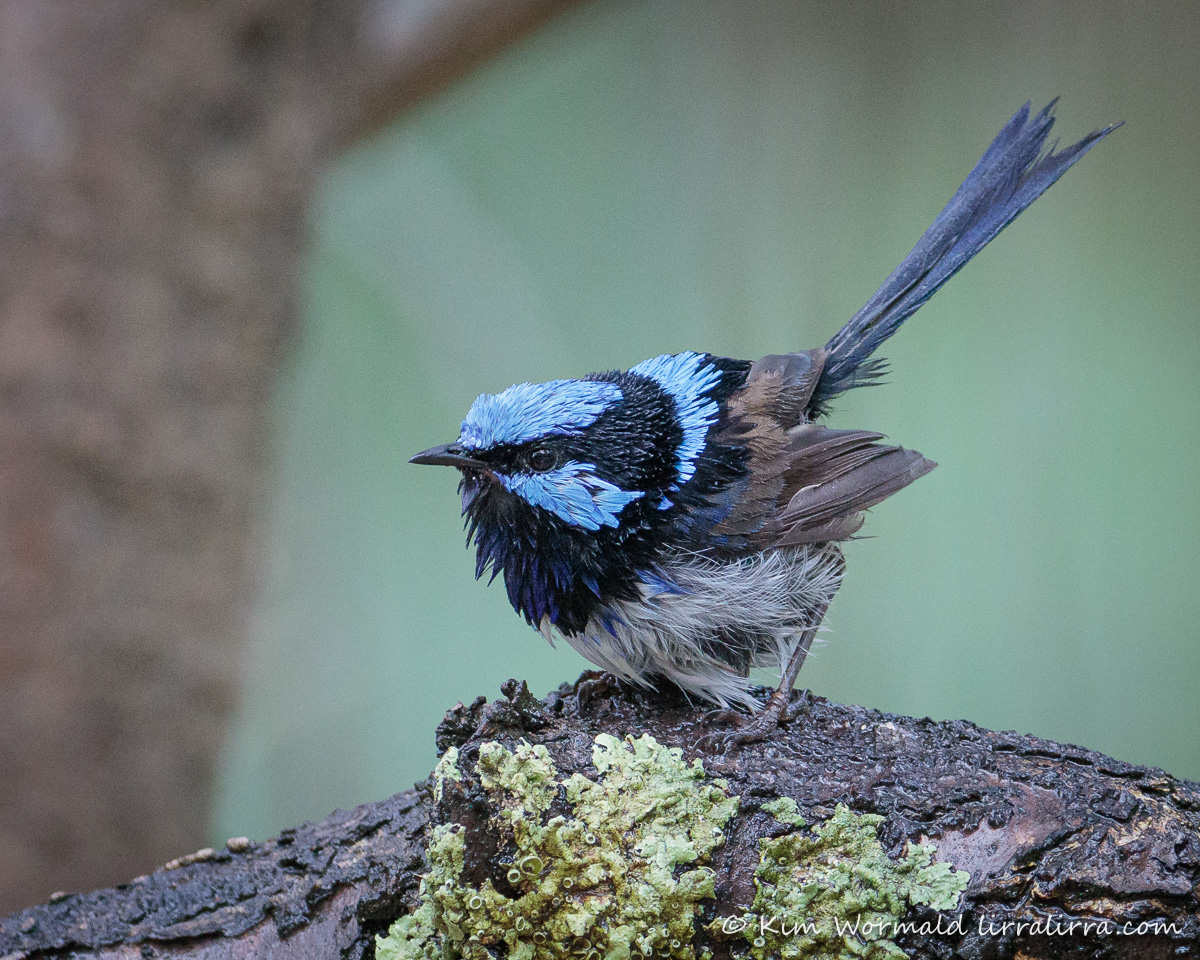
I didn’t even have time to properly set up my tripod before the activity began. There was not a moment without at least one bird at the birdbaths. Usually there were several birds, often there were several species! I didn’t know where to point the camera and there were many shots where the bird I was focussed on was photo-bombed. It was wonderfully hilarious.
I always love seeing fairywrens and this male, along with three females, visited a few times during the 55 minutes I had to spare.
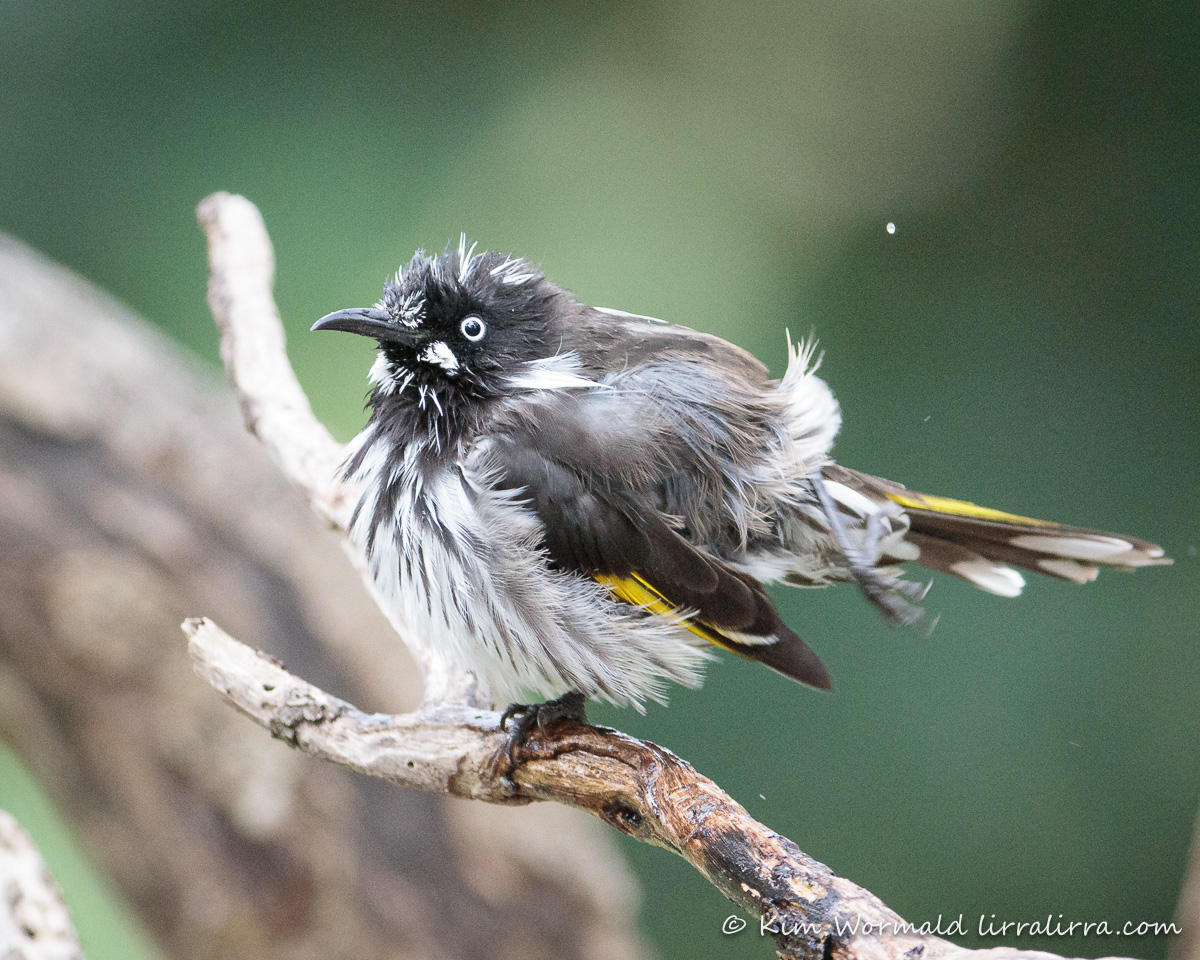
New Holland Honeyeaters are colourful characters to watch, noisy, assertive and either slim-lined or fluffed up if they are caught shaking water droplets from their feathers, like this one.
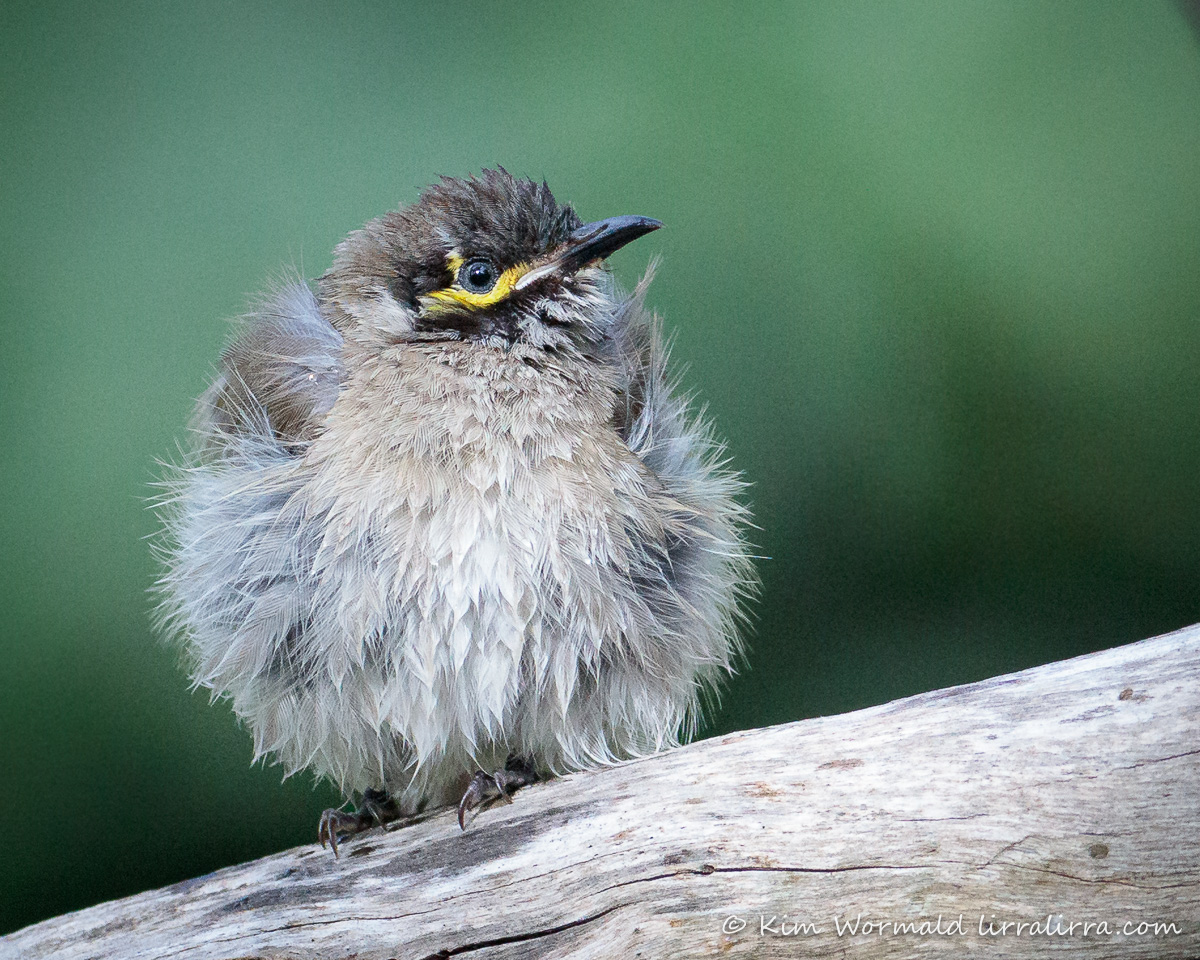
Another species that is usually very slim-looking is the Yellow-faced Honeyeater, so you can imagine how I smiled seeing this one looking like a pompom with a beak.
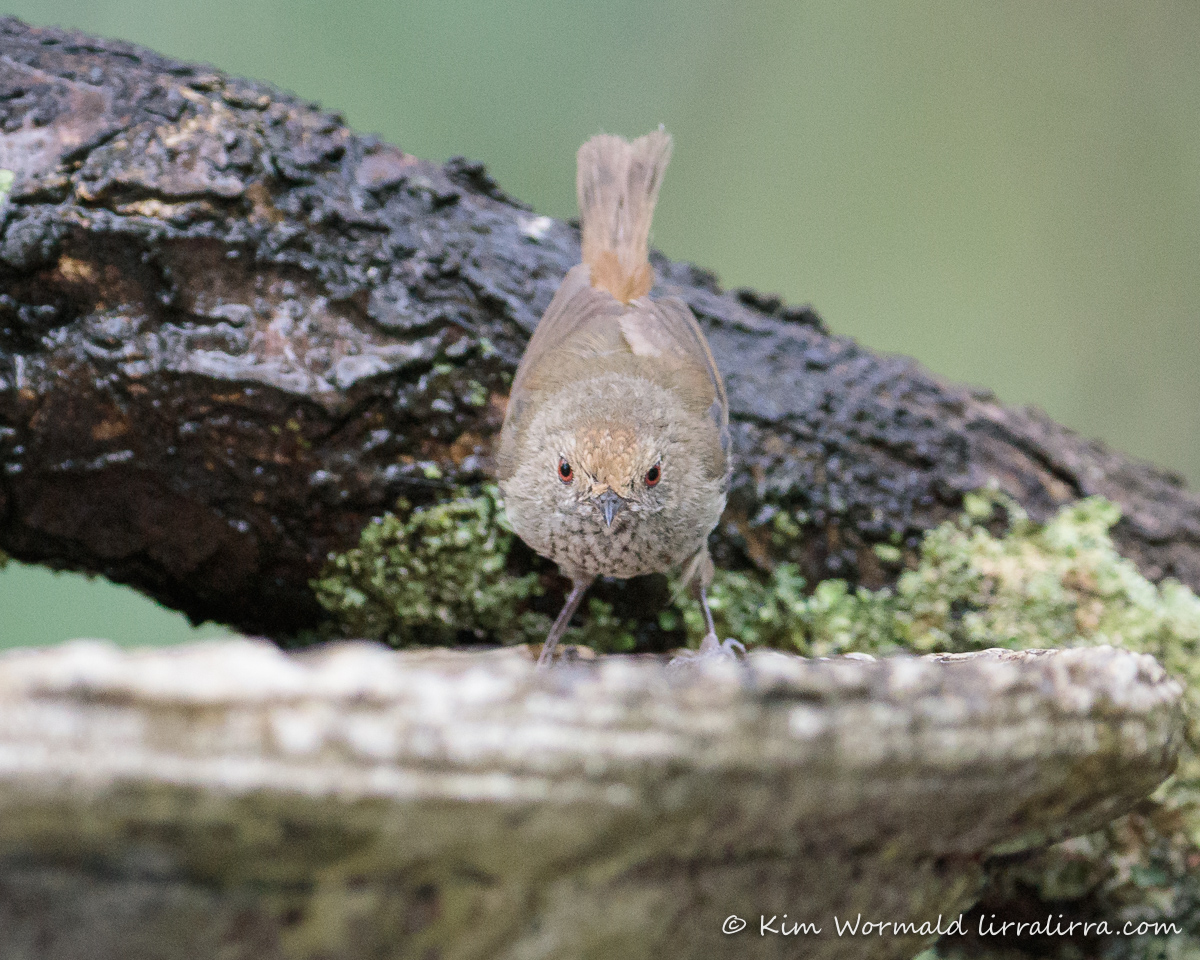
Brown Thornbills visited several times too, rapidly darting around as they bathed and preened. Often I’ll see Striated Thornbills with the browns but they didn’t appear this time.
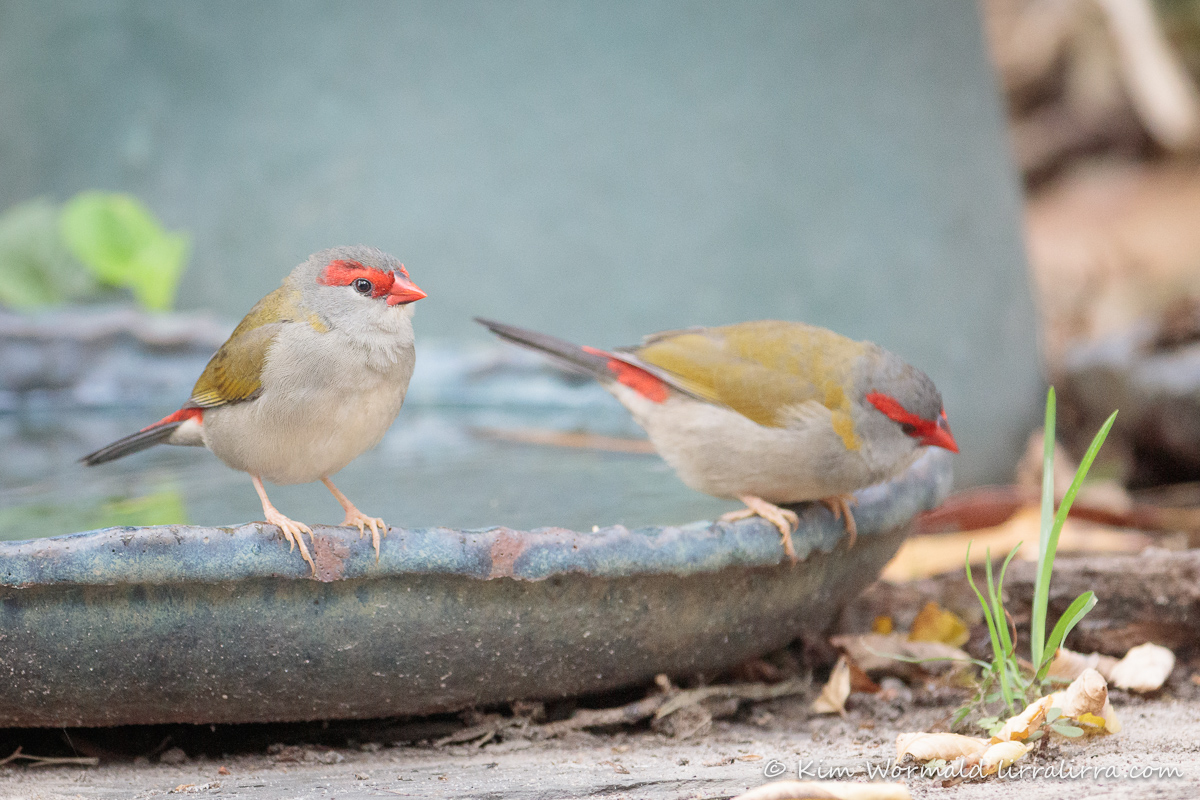
Red-browed Finches love the beautiful birdbath a friend made for me. This birdbath is shallow and kept on the ground. It is often used by fairywrens and scrubwrens as well as the finches. The finch looking at the grass hopped down and picked a blade – I’ll share that photograph another day.
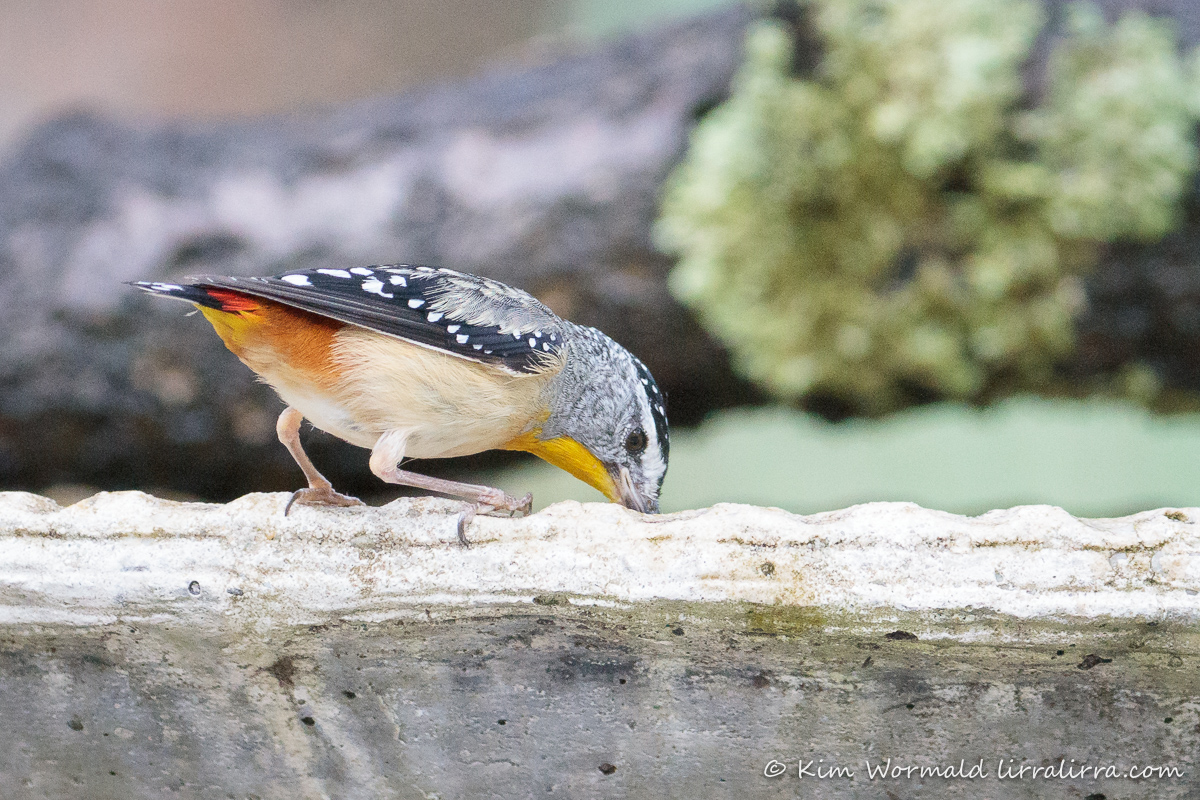
A splash of colour turned up as I was photographing a couple of other species. It’s always a delight to see Spotted Pardalotes!
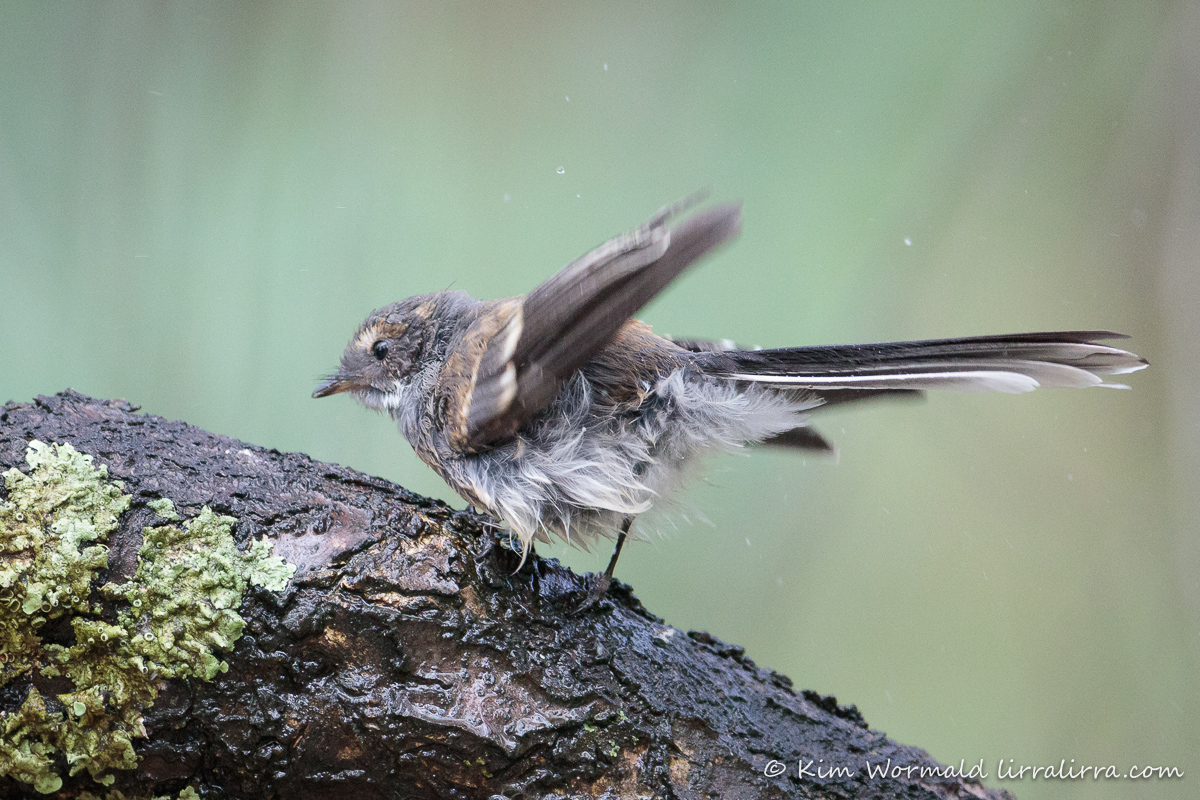
Adult Grey Fantails and a couple of juveniles were also frequent visitors during the hour. They prefer the shallowest birdbath on a pedestal. I especially like the rufous brown colours of the juvenile fantails.
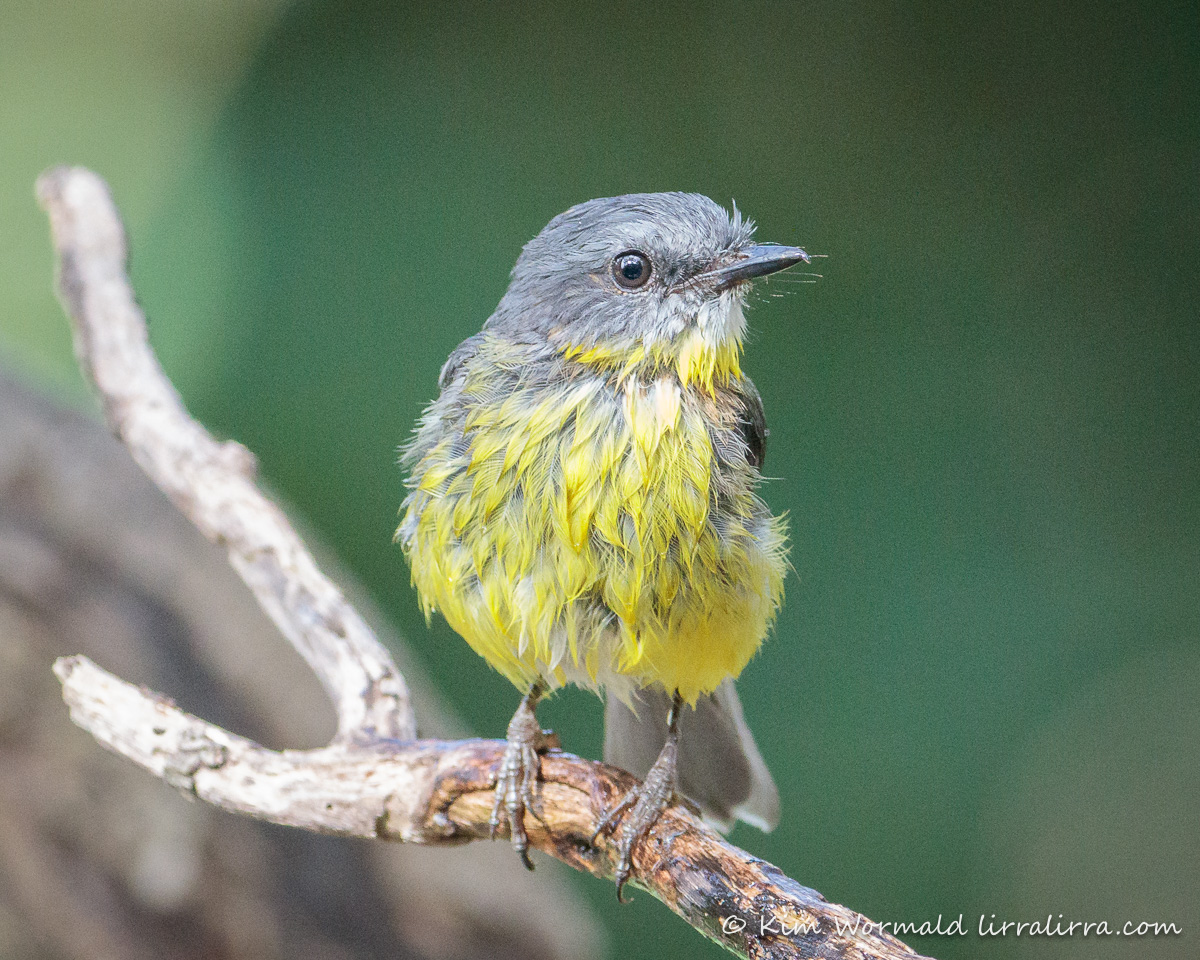
I look through my lens with my right eye but I make sure I keep my left eye open so I can see a little more of what’s going on around me – the field of view through my long lens is extremely small. If I’d had my left eye closed I wouldn’t have seen this Eastern Yellow Robin turn up to bathe in the deep birdbath on a pedestal. I keep a rock in that bath to ensure that wet birds are always able to climb out safely if they get waterlogged.
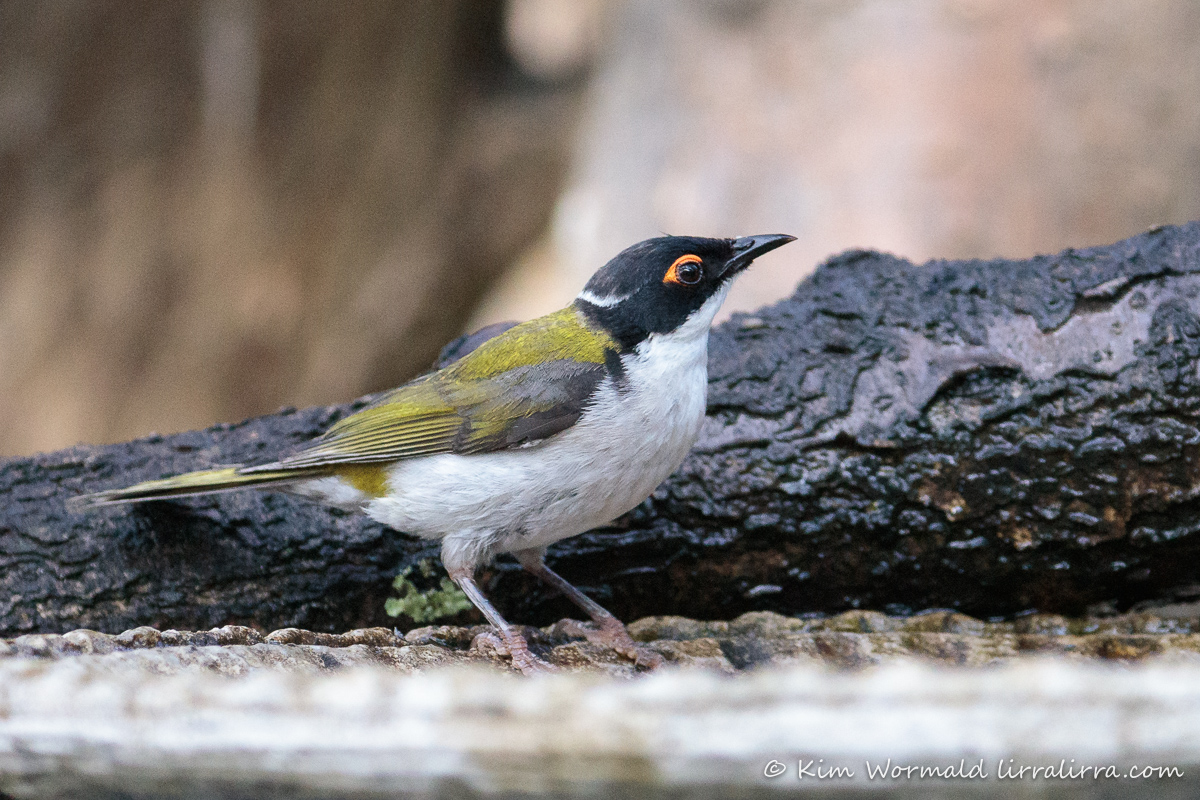
Just when I was thinking things would have to start slowing down this White-naped Honeyeater arrived at the shallow, pedestal bath. I always let birds drink or bathe before I click the shutter button as I don’t want to risk frightening them before they’ve done what they came for.
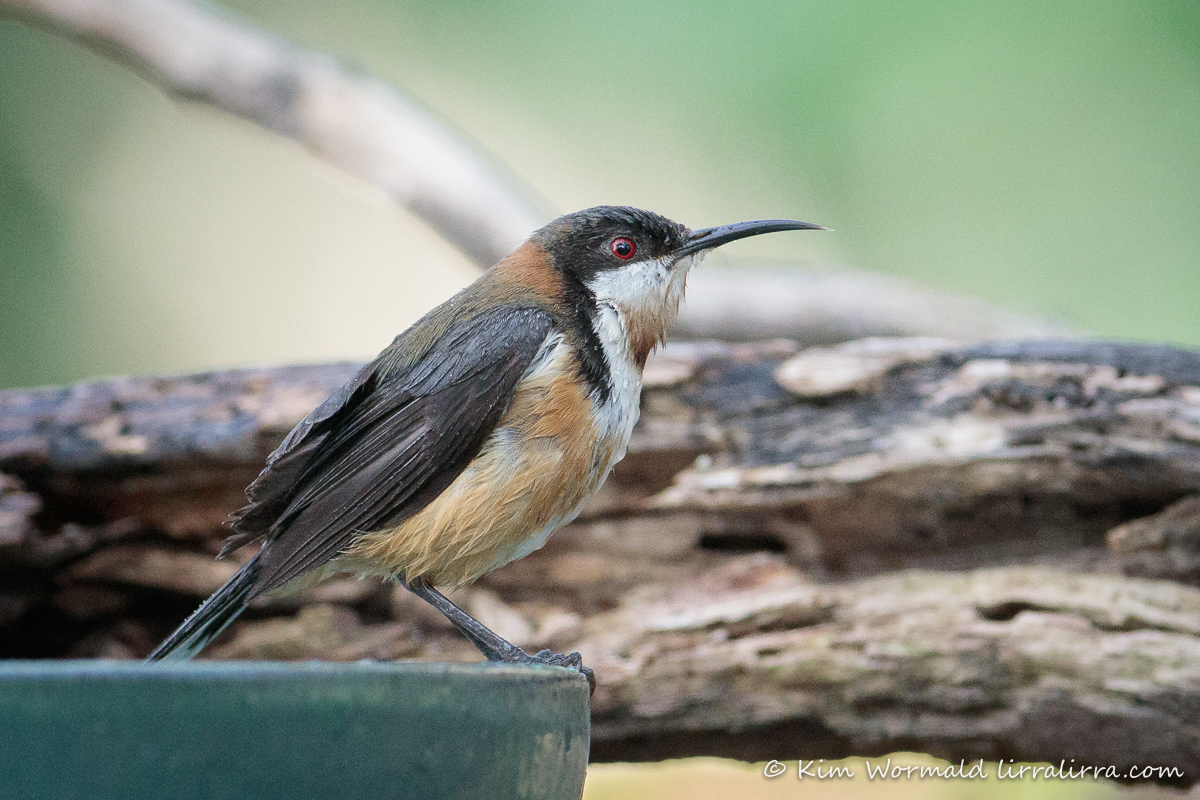
Eastern Spinebills are just about always visible in my garden as they bath, or feed on Kangaroo Paw, correas and other nectar-bearing plants. I enjoy the way they hover to feed, like our version of hummingbirds.
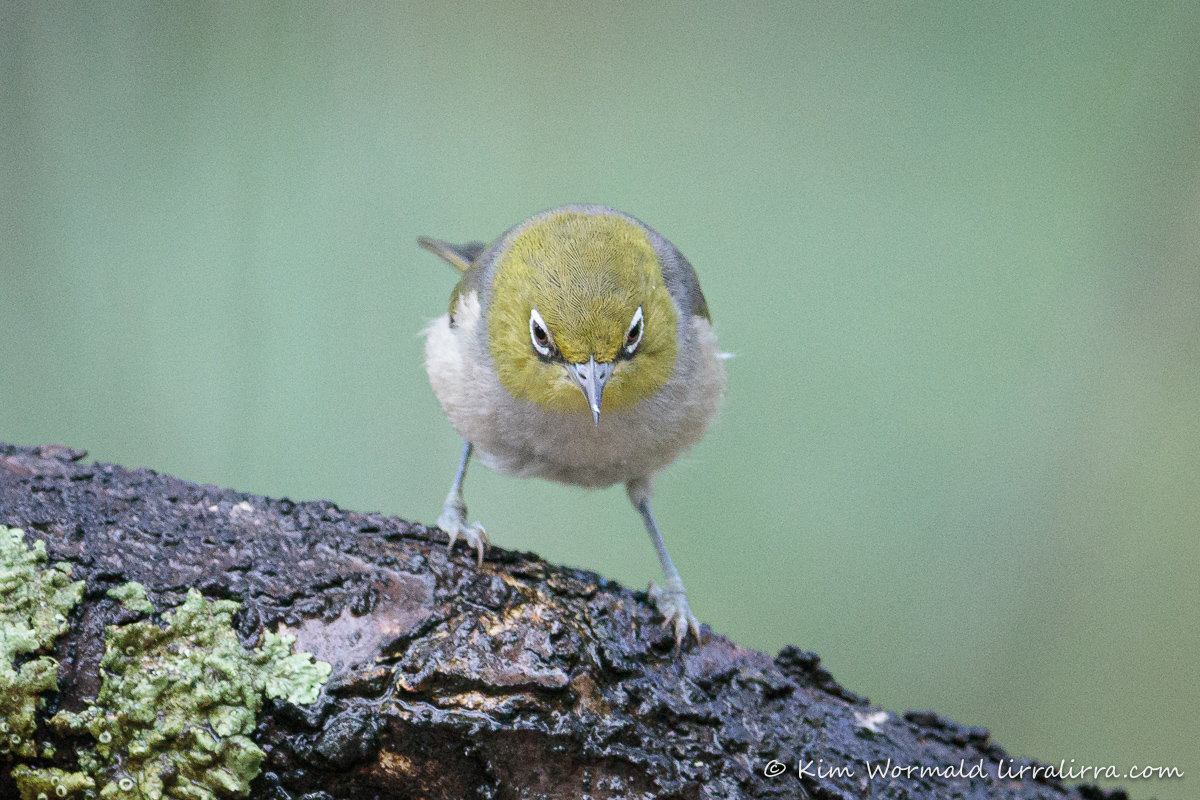
And then the Silvereyes turned up, happily splashing about in the water regardless of which other species were also bathing.
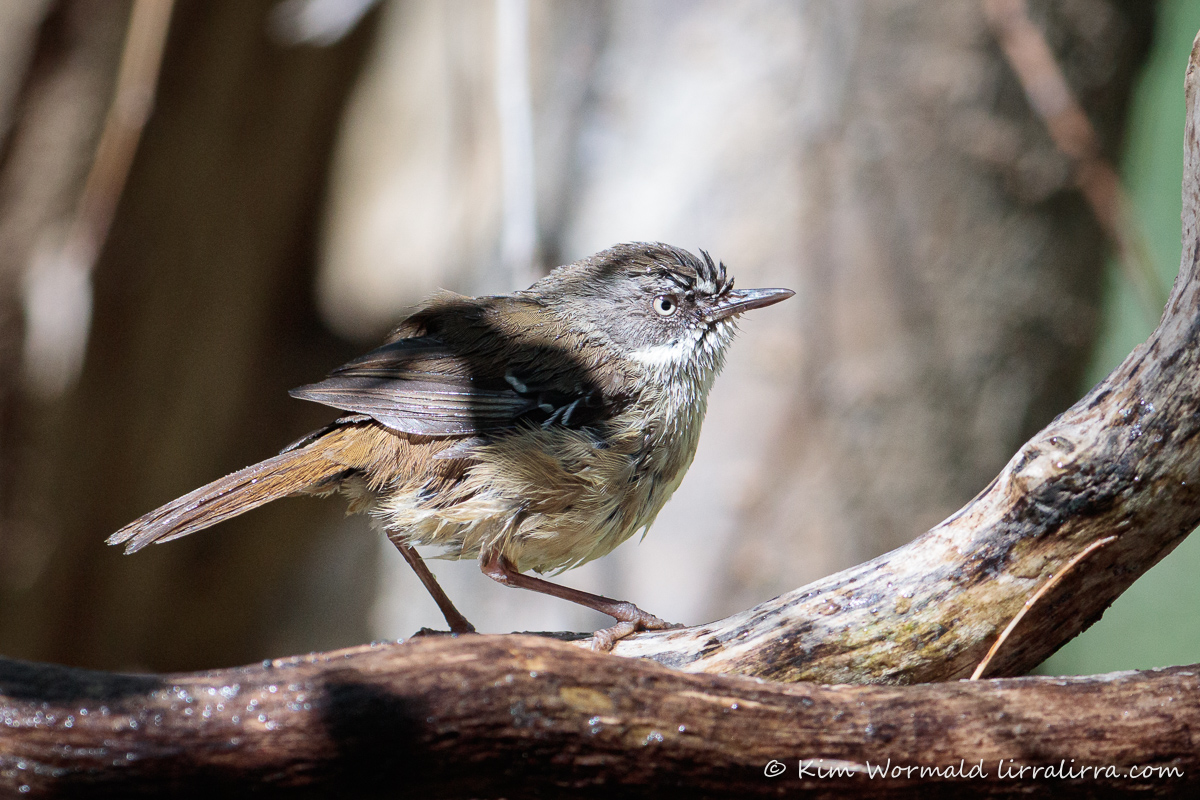
The White-browed Scrubwren shot is from a previous day as it didn’t stay long enough for a new photograph. The scrubwrens usually use the shallow bath on the ground but this time they use the shallow pedestal bath. That has just made me wonder if it’s a little warmer up there as it gets a bit more sun… probably not. The thirteenth bird was a Common Blackbird, the only non-native bird that popped in for a quick visit.
I took over 400 photographs in 55 minutes, some are beauties, others are record shots but the overall experience was exhilarating. I was blessed.
If you have a moment I’d be super grateful if you would send a note to the email addresses below to advocate for a ban on duck shooting in Victoria. Many MPs have publicly spoken in favour of a ban but the issue is being discussed now and the more pressure from the public the more likely we are to win. I believe we are close to joining WA, NSW, ACT and Qld to ban this cruel, archaic and unnecessary ‘sport’. Nature-based tourism, including bird-watching, has been proven to provide more financial benefit to regional areas while also being much kinder towards our diminishing wildlife. Your email can be brief and addressed to these ministers: sonya.kilkenny@parliament.vic.gov.au gayle.tierney@parliament.vic.gov.au ingrid.stitt@parliament.vic.gov.au lily.dambrosio@parliament.vic.gov.au and the Premier daniel.andrews@parliament.vic.gov.au If you’d like more information about the issue please check my ‘Season of Shame’ posts in the right-hand sidebar.
Thank you so much, happy birding, Kim
~ Prints and gifts Lirralirra Shop
~ Facebook page Kim Wormald – lirralirra
~ Facebook group Ethical Bird Photography

What a wonderful panoply of photos Kim, how gorgeous and wonderful that you enjoyed this experience and were able to pass onto us. Yes will definitely write re Ban on Duck Shooting, how sad that some of our states still ‘tolerates’ this supposed sport.
Best wishes,
Alison
Thank you Alison, it was seriously lovely. And thank you so much for sending ‘ban duck shooting’ emails, it will be wonderful when it is finally banned, Kim
I have just compiled this list of email addresses for these politicians and many of them, except Gayle Tierney, Lily d’ambrosio and Sonya Kilkenny, have indicated they support a ban on this barbaric slaughter of these defenceless, gentle, beautiful birds. These politicians have publicly stated their opposition and, therefore, need our support to finally stop this carnage.
gayle.tierney@parliament.vic.gov.au,
ingrid.stitt@parliament.vic.gov.au,
lily.dambrosio@parliament.vic.gov.au,
Stephen McGhie ,
darren.cheeseman@parliament.vic.gov.au,
lizzie.blandthorn@parliament.vic.gov.au,
kat.theophanous@parliament.vic.gov.au,
Will Fowles ,
josh.bull@parliament.vic.gov.au,
jordan.crugnale@parliament.vic.gov.au,
matt.fregon@parliament.vic.gov.au,
katie.hall@parliament.vic.gov.au,
gary.maas@parliament.vic.gov.au,
nick.staikos@parliament.vic.gov.au,
jackson.taylor@parliament.vic.gov.au,
sonja.terpstra@parliament.vic.gov.au,
james.newbury@parliament.vic.gov.au,
Paul.Hamer@parliament.vic.gov.au
“Let us develop respect for all living things. Let us try to replace violence and intolerance with understanding, compassion and love.” Jane Goodall
On behalf of our beautiful feathered friends we must make this happen.
That’s fabulous Barbara. Lily may not have spoken publicly but I believe she supports a ban, I don’t know about Gayle or Sonya. Let’s hope the tide is turning quickly enough for there to be no duck shooting season this year, or ever again.
What a wonderful weekly post this week!
Love all of your visitors to your bird baths Kim, and your photos are amazing.
Have emailed all of the pollies on the list, let’s hope they listen.
Off to Winton Wetlands on Friday, apparently it’s now reopened. Wish us luck!
Thank you so much Julie for sending emails. Great that you’re going to Winton Wetlands! Shooters are very unimpressed that it became a restoration project and they often say no one visits there as a nature-based tourism operation – which is clearly untrue. Have a wonderful visit, I hope you see heaps of beautiful birds.
Fantastic! Unfortunately, we don’t have any small birds visiting our property. Our block has plenty of trees and understory. Grass seeds insects and flowers are abundant. We have an acre of land that backs onto a tree-lined creek with an easement that connects to a bushland reserve. 3-4 years ago we had regular mixed flocks of small birds moving through the garden several times a day. I’m hoping it’s just a temporary situation.
That happened here for a while Stephen. It was devastating. I was concerned that it was due to the reduction in insect numbers but think it might have been due to clearing on Melbourne Water land behind my place. I had butcherbirds, currawongs, ravens, goshawks and sparrowhawks here more often than usual – I think this was because their hunting grounds had been diminished. The balance has righted itself again, thank goodness. I hope your small birds come back soon, your place sounds perfect for them.
An unexpected spare hour can reap amazing rewards as you have just shown. Your collection is helping me identify some that come to my birdbath.
I am familiar with the Red Browed Finches which are prolific here and I love watching lots of them bathing together.
I’m very pleased I decided that the ‘jobs’ could wait a little while longer. How lovely that the finches are visiting your birdbaths, they are cute little birds.
Such a delight Kim, thanks for recording this magic hour with your wonderful photographs! Your garden must be a haven!
Oh Liz, you are absolutely right. My girls told me that every time we came here, before we built, I would make the same comment, ‘This place is a haven for birds’.
What a magical, magical hour. Restorative and wonderful. And of course I will send an email. The sooner that duck hunting is banned the better.
Thank you heaps for sending an email!
Just marvelous!
It truly was magical Thomas
Gosh what a stunning selection of little beauties!
And thank you for the prompt re the duck season, I’ve sent another email!
I could hardly believe it Alyssa, so lovely. And thank you for sending another email!